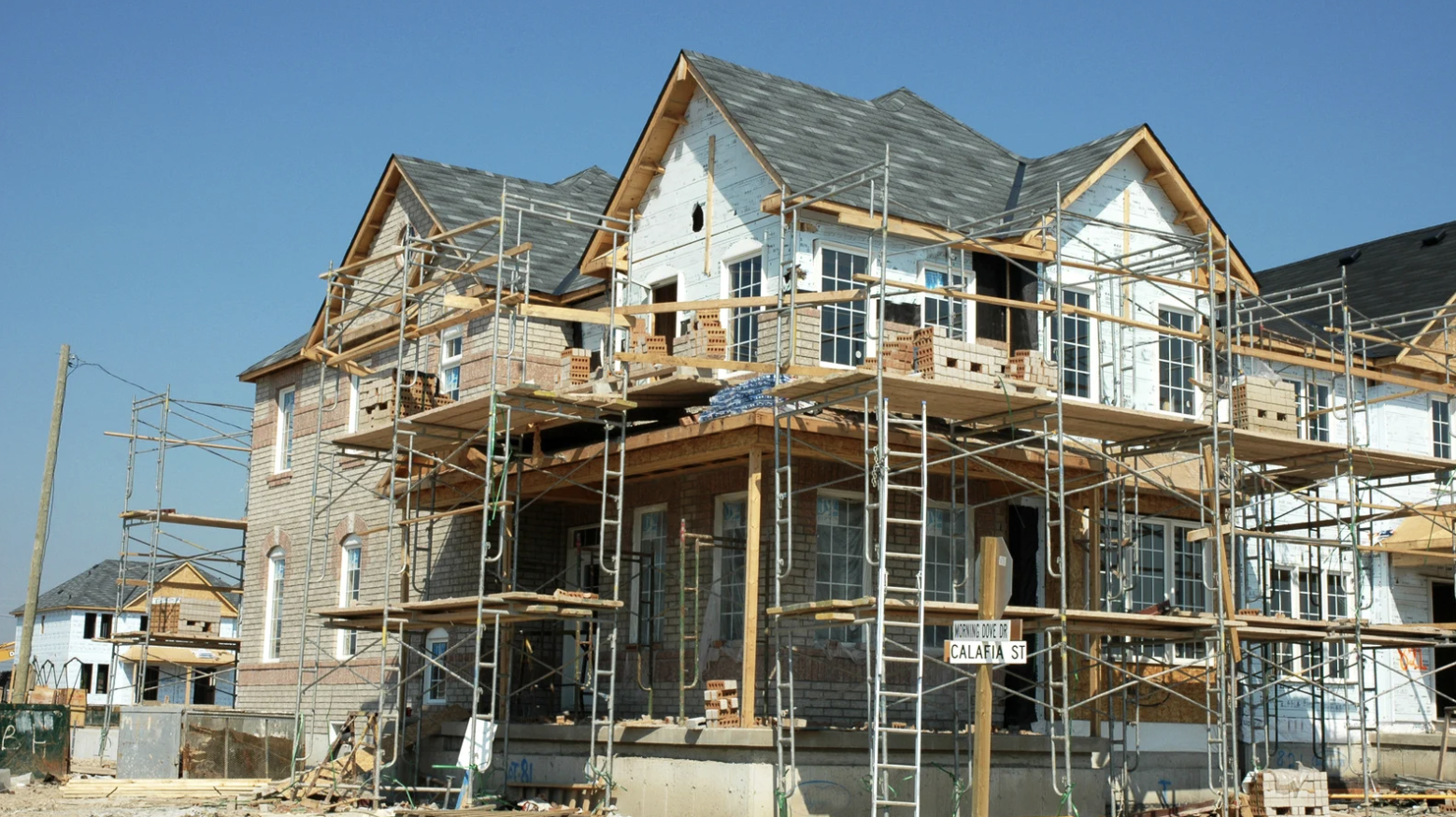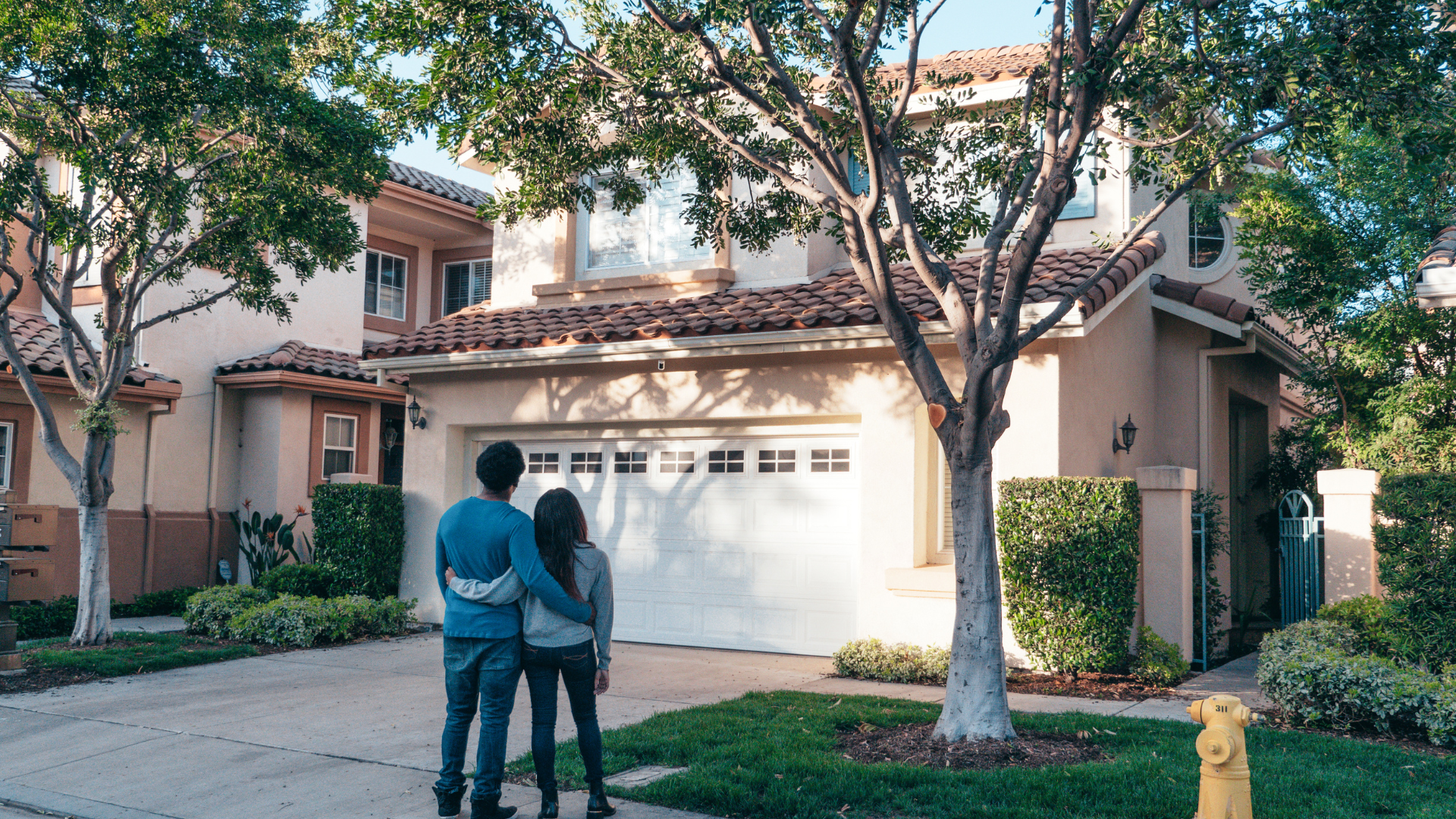Building a new home is exciting, but figuring out how to pay for it can feel confusing.
You might be wondering how a new home construction loan actually works, what it costs, and whether it’s the right choice for you.
The good news is, you’re not alone – many people have the same questions when starting their home-building journey.
In this blog, we’ll walk you through everything you need to know, from how construction loans work and what it takes to qualify, to the different loan types, costs, and even alternatives.
Let’s see how you can turn your home plans into reality without surprises along the way.
What is a New Home Construction Loan?

A new home construction loan is short-term financing that helps you build a house from the ground up. Unlike a regular mortgage, the lender doesn’t give the full amount at once.
Instead, funds are released in stages, known as draws, tied to major milestones such as the foundation, framing, or finishing work.
During construction, you usually make interest-only payments on the amount already borrowed, keeping payments more manageable.
Because there’s no finished home as collateral, lenders consider these loans higher risk, which leads to stricter approval standards, higher interest rates, and shorter loan terms – typically six months to a year.
Before each draw, an inspector checks the completed work to ensure progress matches the plan. Once construction ends, the loan converts or refinances into long-term financing.
Types of Construction Loans
Not all construction loans are the same. Lenders offer different options depending on your needs and how you plan to pay once the home is finished.
| Loan Type | Description | Pros | Cons |
|---|---|---|---|
| Construction-to-Permanent | Starts as a construction loan, then automatically converts to a mortgage once the home is complete. | – One application, one closing, one set of fees. – Simple and convenient. |
– May have higher rates. – Stricter qualification requirements. |
| Construction-Only | Short-term loan that must be paid off at the end of construction; requires a separate mortgage afterward. | – Flexibility in choosing a future mortgage. – Can shop for better terms later. |
– Two closings. – Two sets of fees. – Higher overall costs. |
| Renovation & Specialty | Designed for remodels, unique builds, or specific borrower needs (e.g., FHA, VA, owner-builder loans). | – Tailored to special projects or situations. – Government-backed options available. |
– Terms vary widely. – May be harder to qualify. |
Requirements to Qualify for the Loan
Getting approved for a construction loan is usually more difficult than qualifying for a traditional mortgage.
- Credit score, DTI, and income stability: Most lenders look for a credit score of around 680 or higher. They’ll also check your debt-to-income (DTI) ratio and want proof of a steady, reliable income.
- Down payment: Expect to put down at least 20% of the project cost. Some government-backed programs, like FHA loans, may allow smaller down payments (as low as 3.5%).
- Land ownership: You either need to already own the land or have plans to purchase it as part of the loan. The land itself may be used as part of the collateral.
- Builder approval: Lenders usually require you to work with a licensed and insured builder. They’ll review the builder’s reputation, experience, and your full construction plan, including budget and timeline.
Lenders take on more risk since there isn’t a finished home to use as collateral, so they want to be sure you and your project are financially sound.
Government-Backed Construction Loan Programs
These programs make it easier for some borrowers to qualify for a construction loan by lowering down payment requirements or offering special terms.
- FHA Construction Loan:An FHA construction loan is backed by the Federal Housing Administration and requires as little as a 3.5% down payment if you meet credit score standards. It’s a good option for borrowers with moderate credit or limited savings who may not qualify for conventional loans
- VA Construction Loan: A VA construction loan is offered to eligible veterans, active-duty service members, and some spouses. It typically requires no down payment, provides competitive interest rates, and follows specific VA service eligibility rules.
- USDA Construction Loan: A USDA construction loan is designed for borrowers in designated rural areas with low to moderate incomes. It offers zero down payment options through approved lenders, provided both income and property meet USDA standards.
Costs & Rates You Should Expect
Before you move forward with a construction loan, it’s important to understand the costs and rates involved so you can plan your budget with confidence.
| Cost Type | Estimate / Range | Details |
|---|---|---|
| Interest Rates | 1%–2% higher than standard mortgages | If a mortgage rate is 6.5%, a construction loan may be 7.5%–8.5%. |
| Closing Costs (Single) | 2%–5% of the total loan amount | Applies to construction-to-permanent loans (only one set of closing fees). |
| Closing Costs (Double) | Additional $5,000–$10,000 | Construction-only loans require two closings, doubling some fees. |
| Inspection Fees | $100–$250 per visit | Multiple inspections are required at each construction milestone. |
| Appraisal Fees | $500–$1,000 each | Appraisals may be required before and after construction. |
| Total Hidden Fees | $1,000–$2,000+ | A combination of inspections, appraisals, and administrative charges. |
Step-by-Step: How to Apply for a Construction Loan
Applying for a construction loan can feel overwhelming, but breaking it into clear steps makes the process easier to follow. It all begins with prequalification, where you find out how much you may be able to borrow.
1. Prequalification
The process starts with meeting a lender to review your credit score, income, and debt-to-income ratio.
This step helps you understand how much you might qualify for and sets expectations about down payment requirements. Prequalification also gives you a chance to ask questions and compare lenders before moving forward.
2. Submitting Documentation
Once prequalified, you’ll need to provide supporting documents. These often include tax returns, pay stubs, bank statements, and proof of employment.
Lenders also require detailed construction plans, cost estimates, and proof of land ownership or a purchase contract. Having a well-prepared file improves your chances of approval and speeds up the process.
3. Lender Review of Plans & Builder
At this stage, the lender closely reviews your project details and the builder’s background. They’ll verify that your contractor is licensed, insured, and experienced.
The lender also checks that the construction budget, timeline, and design are realistic. This step is important because the lender’s approval ensures they are comfortable funding your specific project.
4. Approval & Disbursement
Once approved, the loan moves into the disbursement phase. Instead of receiving the full loan upfront, funds are released in draws tied to construction milestones, such as completing the foundation or installing the roof.
After each inspection, funds are released. During this time, you’ll make interest-only payments on the money already disbursed.
Common Challenges & Mistakes to Avoid
Building a home is exciting, but many borrowers run into avoidable mistakes during the loan and construction process. Knowing the common challenges upfront can help you plan smarter and avoid costly setbacks.
- Underestimating Costs: Many first-time builders fail to budget for unexpected expenses like material price increases, design changes, or inspection fees. Always add at least 10–15% as a cushion in your budget.
- Choosing the Wrong Builder: Working with an unlicensed or inexperienced builder can lead to poor workmanship, delays, and even loan approval issues. Always verify credentials, references, and past projects.
- Not Accounting for Delays: Weather, supply shortages, and permit issues can slow construction. Build extra time into your schedule and confirm how delays may affect your loan terms.
- Double-Closing Cost Surprises: With construction-only loans, you’ll pay closing costs twice. Many borrowers don’t realize this upfront, leading to thousands of dollars in unexpected fees.
Alternatives to Construction Loans
If a traditional construction loan doesn’t fit your situation, there are other ways to finance a home build.
- Home Equity Line of Credit (HELOC): If you already own a home with built-up equity, a HELOC allows you to borrow against that value. It can be flexible and often has lower rates than a construction loan.
- Personal Loans: For smaller projects or partial funding, an unsecured personal loan may work. Approval is usually faster, but interest rates can be higher since no property is used as collateral.
- Part Cash, Part Loan: Some borrowers use their own savings for part of the build and a smaller loan for the rest. This reduces borrowing costs and can make it easier to qualify.
Conclusion
Understanding how a new home construction loan works can make building your dream home feel less overwhelming and more achievable.
You’ve learned what these loans are, how they’re different from mortgages, the costs to expect, and the steps to qualify. With this knowledge, you can plan smarter, avoid common mistakes, and choose the option that fits your needs best.
Remember, the key is to prepare early, work with a trusted builder, and keep a cushion in your budget for surprises.
The more informed you are, the smoother the process will be.
Frequently Asked Questions
Can I be my own builder with a construction loan?
Some lenders allow “owner-builder” loans, but many prefer licensed contractors to reduce risk. It depends on your lender and your own experience.
Do construction loans cover furniture and landscaping?
Typically, no. Construction loans focus on the structure itself — land, labor, and building materials. Extras like furniture, décor, or some landscaping usually aren’t included.
Can I lock in my mortgage rate before construction is finished?
Some lenders offer extended rate locks when a construction-to-permanent loan is used, but these may come with added fees. It’s worth asking upfront.









